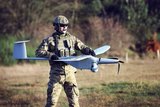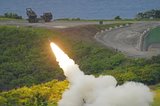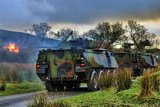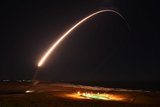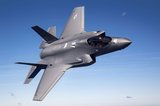China sends bombers around Taiwan
China flew bombers and fighter jets around Taiwan on 26 April, the air force said, the latest show of force by Beijing following warnings against any drive for independence on the self-ruled island.
According to the China’s Air Force, H-6K bombers, early warning aircraft, reconnaissance planes and several types of fighter jets took off from multiple airports for ‘combat drills’.
The planes flew over Bashi Strait, south of Taiwan and the Miyako Strait, near Japan's Okinawa Island, it said.
The air force said its H-6K bombers have completed several drills that involved circling Taiwan since April 18 "to strengthen its capacity to safeguard national sovereignty and territorial integrity".
The manoeuvre came a day after China said recent exercises served as a message against any moves toward independence and warned that it was ready to take unspecified further steps.
China sees the democratically-governed island - which has never formally declared independence from the mainland - as a renegade part of its territory to be brought back into the fold, and has not ruled out reunification by force.
Taipei has accused Beijing of ‘sabre rattling’ and trying to stoke regional tensions with its recent drills.
Taiwan announced on 24 April that it will practise thwarting a Chinese ‘invasion’ in annual live fire drills in June by simulating surprise coastal assaults.
Chinese H-6K bombers and spy planes had previously flown around Taiwan last week.
Chinese combat helicopters conducted live-fire drills with missiles off southeast China on 18 April, state media said last week without confirming whether the exercises took place in the sensitive Taiwan Strait.
Beijing has stepped up military patrols around Taiwan and used diplomatic pressure to isolate it internationally since pro-independence President Tsai Ing-wen took office in 2016.
Beijing's sole aircraft carrier and two destroyers crossed waters south of Taiwan Saturday and carried out "offensive and defensive" drills in the Pacific, China's Navy said.
More from Defence Notes
-
![Taiwan approved for $11 billion weapon purchase from US]()
Taiwan approved for $11 billion weapon purchase from US
The US State Department’s approval of a multi-billion-dollar sale of weapons to Taiwan includes tactical mission networks equipment, uncrewed aerial systems, artillery rocket systems and self-propelled howitzers as well as anti-tank guided missiles.
-
![Ireland spells out $2.3 billion shopping list in five-year defence spending plan]()
Ireland spells out $2.3 billion shopping list in five-year defence spending plan
Ireland’s multi-annual investment in capital defence spending is set to rise from €300m in 2026 to €360m in 2029–2030 with major upgrades across land, air, maritime and cyber domains.
-
![US National Security Strategy prioritises advanced military capabilities and national industry]()
US National Security Strategy prioritises advanced military capabilities and national industry
The 2025 NSS has emphasised investment in the US nuclear and air defence inventory and national industry, but it leaves multiple unanswered questions on how the White House will implement this approach.
-
![Canada set to look away from its neighbour and across the Atlantic for partners]()
Canada set to look away from its neighbour and across the Atlantic for partners
While non-EU UK struggles to join the Security Action for Europe initiative, which provides loans for defence programmes, Canada has become the first country outside Europe to get access – and did so for a nominal fee.
-
![NATO experiments with solutions to integrate networks, AI and uncrewed systems]()
NATO experiments with solutions to integrate networks, AI and uncrewed systems
During the latest edition of the NATO DiBaX, the alliance tested multiple capabilities to inform requirements for future efforts.









